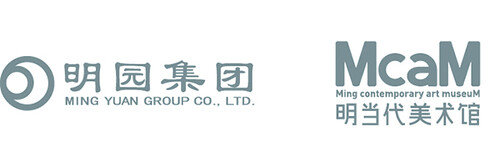November 8, 2017–January 7, 2018
No.436 East Yonghe Road, Jing'an District
200072 Shanghai
China
Hours: Tuesday–Sunday 10am–6pm
T +86 21 5690 0009
info@mcam.io
Organized by Ming Contemporary Art Museum and Mingyuan Group
Produced by Li Songjian and Ling Feifei
Arists:
Abraham Cruzvillegas, Bojan Djordjev,Fong Fo, Haig Aivazian, Li Xiaofei, Ma Yongfeng, Marta Popivoda, Payne Zhu, Sam Hopkins,David Lalé, Social Sensibility R&D Department, Shi Qing, Zhao Chuan + Chen Jianhe, Zhao Zhao, Zheng Bo, Paper Tiger Studio, Said to Contain (Bojan Djordjev, Laura Kalauz, Maja Leo, Christopher Kriese, Lisa Schröter, Miriam Walther Kohn)
Curated by Fu Liaoliao
We are not only living in an era that witnesses mass mobilization caused by globalization. From the migration of population driven by production, trade and war to people who are forced to move due to the appearance of deathtrap and backwater, it seems that globalization has never achieved the vision of the word “globe” assumed to be. On the contrary, in today’s context, globalization rapidly transcends the traditional logic of “production—consumption,” and with the support from the financial, arithmetic and legal perspectives, the control over mobility is becoming increasingly precise and inconspicuous. In the meantime, ideological struggles have never recessed; instead, they have permeated every aspect of life in the face of “amiable” contemporary lifestyle.
Art, inevitably, is an integral part of all that. As part of the city’s urban planning, in the past few years art activities from all over the globe have been “diverted” to different specific areas of the city in a highly precise manner. Such “diversion” no longer appears as some kind of violent interference. Rather, under the guidance on the finance and policy levels, such activities in fact become an integral element of the cultural and economic planning under the global context, networking the seemingly connected but actually isolated individuals and institutes. Moreover, as David Harvey pointed out in his Rebel Cities: from the Right to the City to the Urban Revolution, “capital has ways to appropriate and extract surpluses from local differences, local cultural variations, and aesthetic meanings of no matter what origin.” The flexibility of capital is constantly digesting the locality and individuality of artistic practice, making them become more and more stable and controllable.
How can art workers, or in Antonio Negri’s words the “artists as precarious workers” or “precarious workers as artists” make cracks within the fog of invisible control and illusory diversities, criticize, practice and invent autonomous and genuine mobility and connection? As art space and public/labor space that cannot be deprived from social productive relations, what role should art museum play? The above two interconnected questions constitute a point of departure for curating this exhibition.
The exhibition will occupy both the internal and external space of the Ming Contemporary Art Museum, invite artists and the public to join, and turn it into a site brimming with a constant sense of presence, and precarious sense of production, conflicts, negotiation and interaction. In the meantime, the exhibition intends to reflect upon the function of both the exhibition itself as well as the venue where it takes place, the art museum. During the exhibition, the museum will turn into a lieu for daily activities, which manages to place personal space into the exhibition itself, searching for the energy for individuals to resist/overturn within public space.
To connect what is beyond connection, art museum = market, sports stadium, theatre, square and battlefield.



